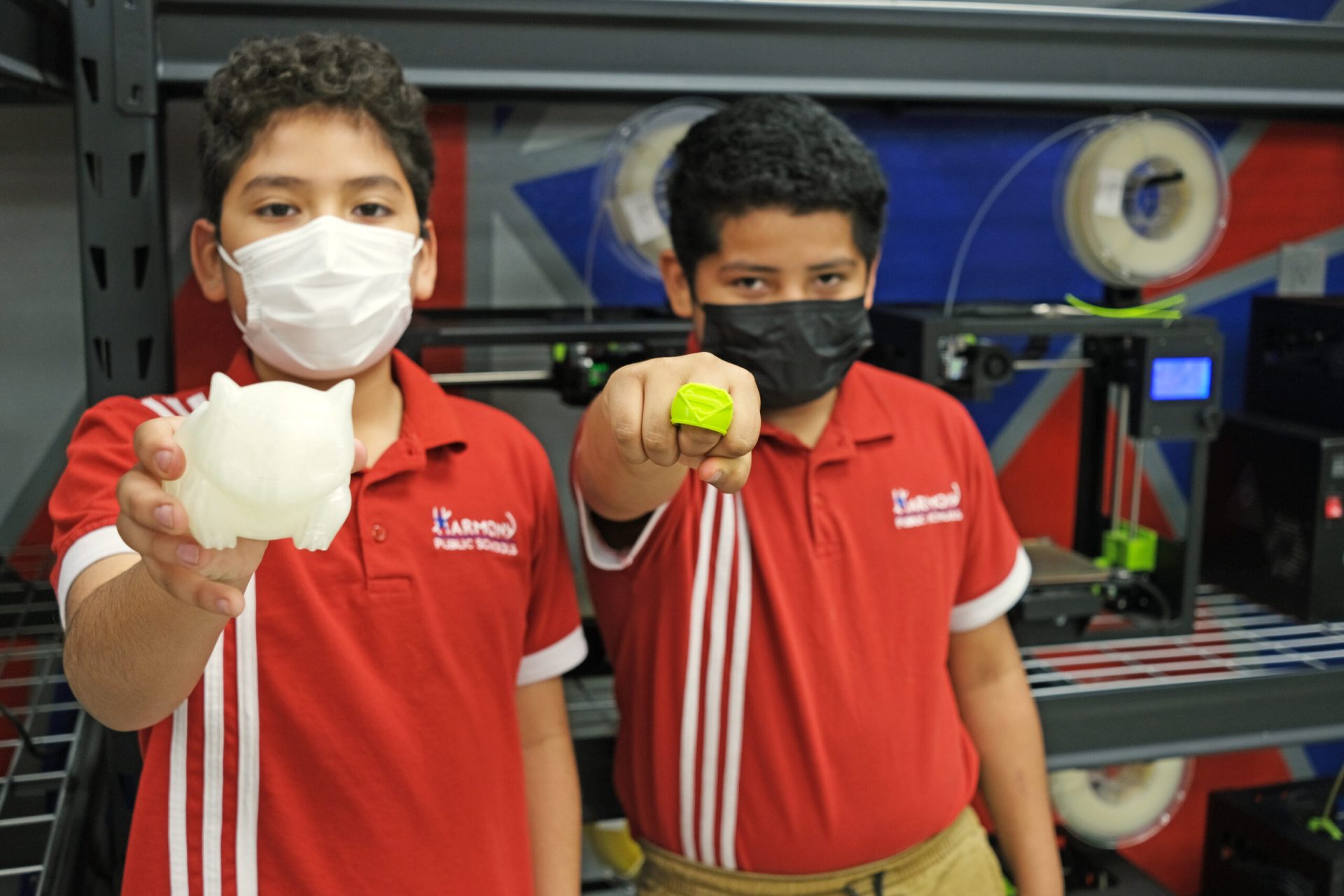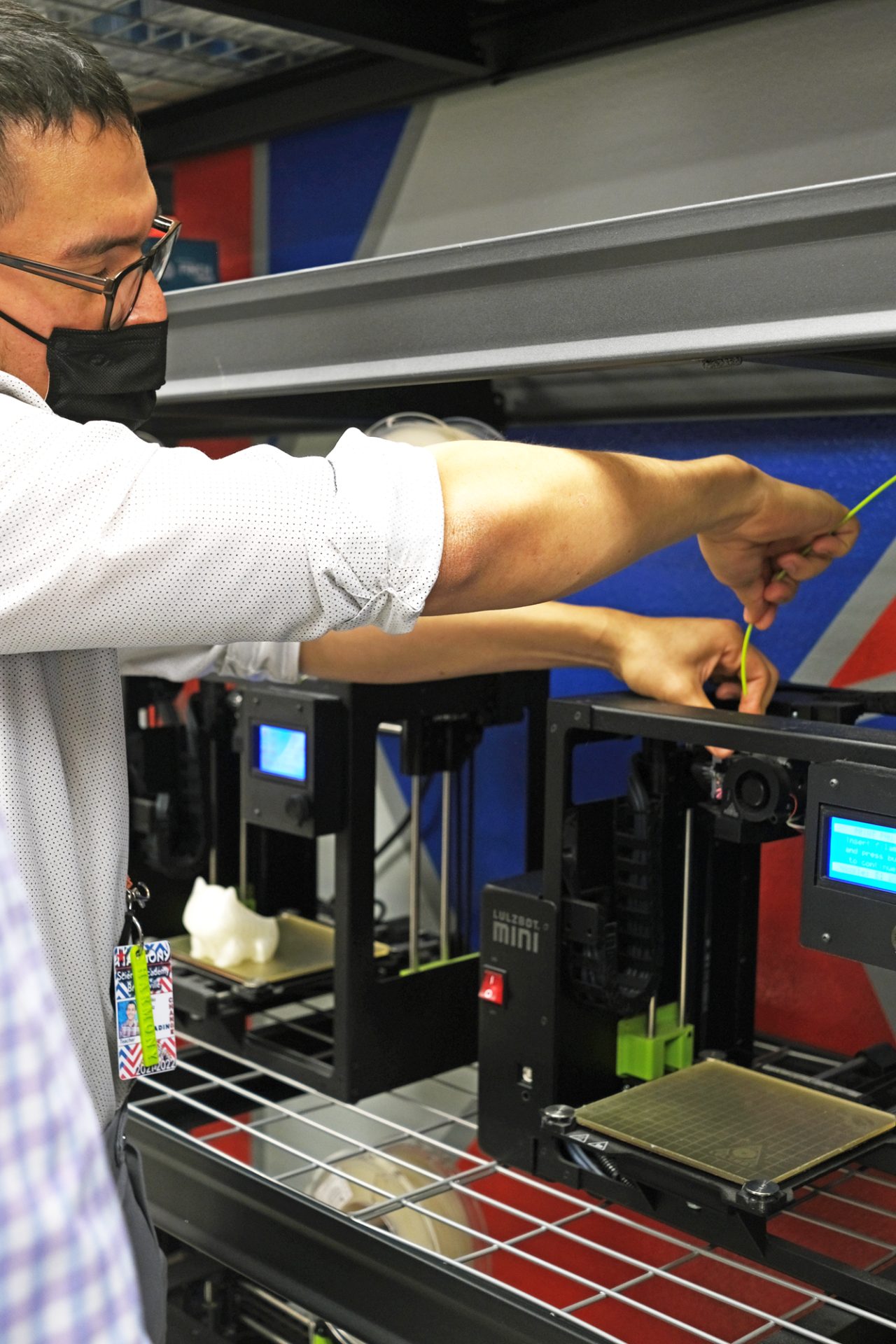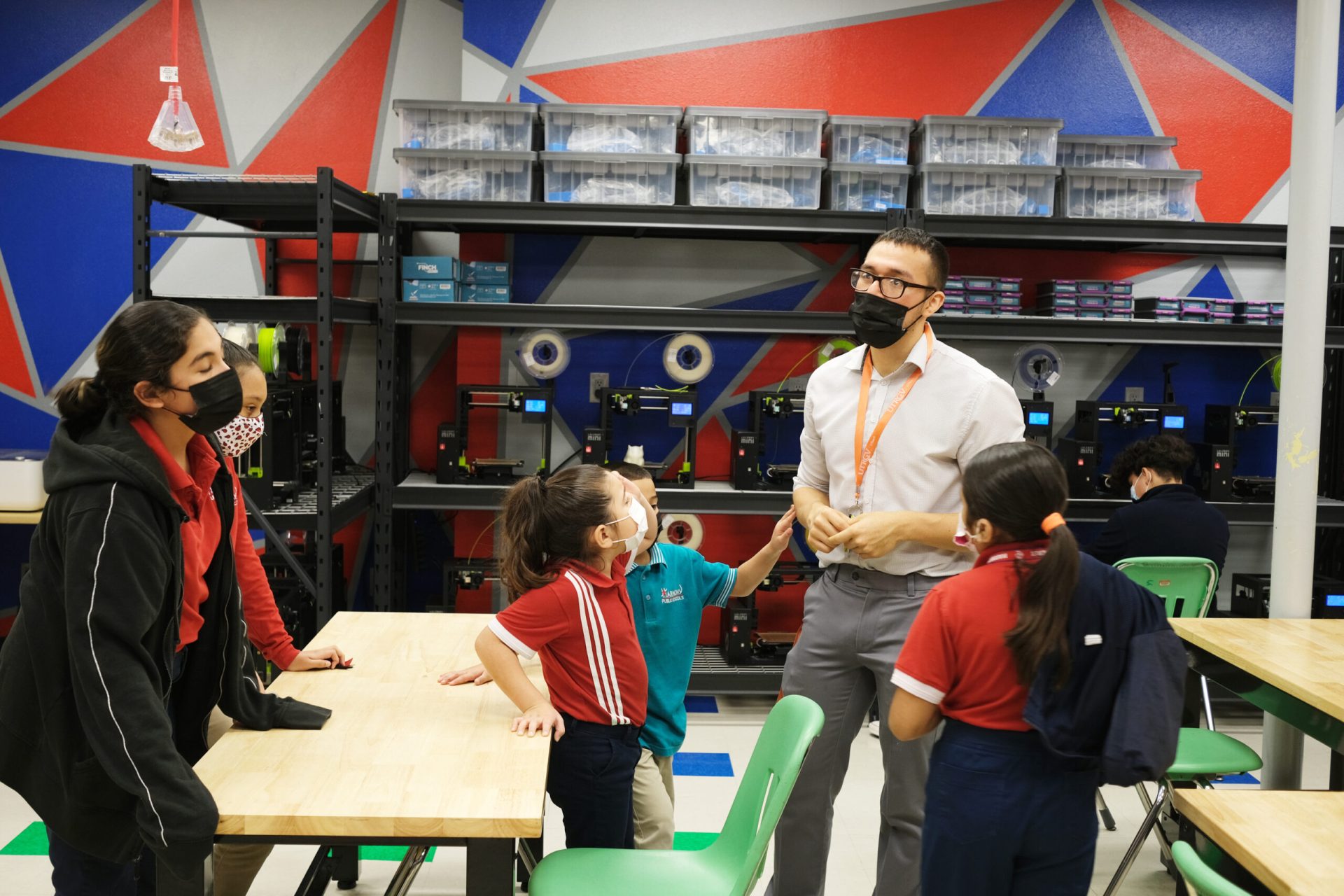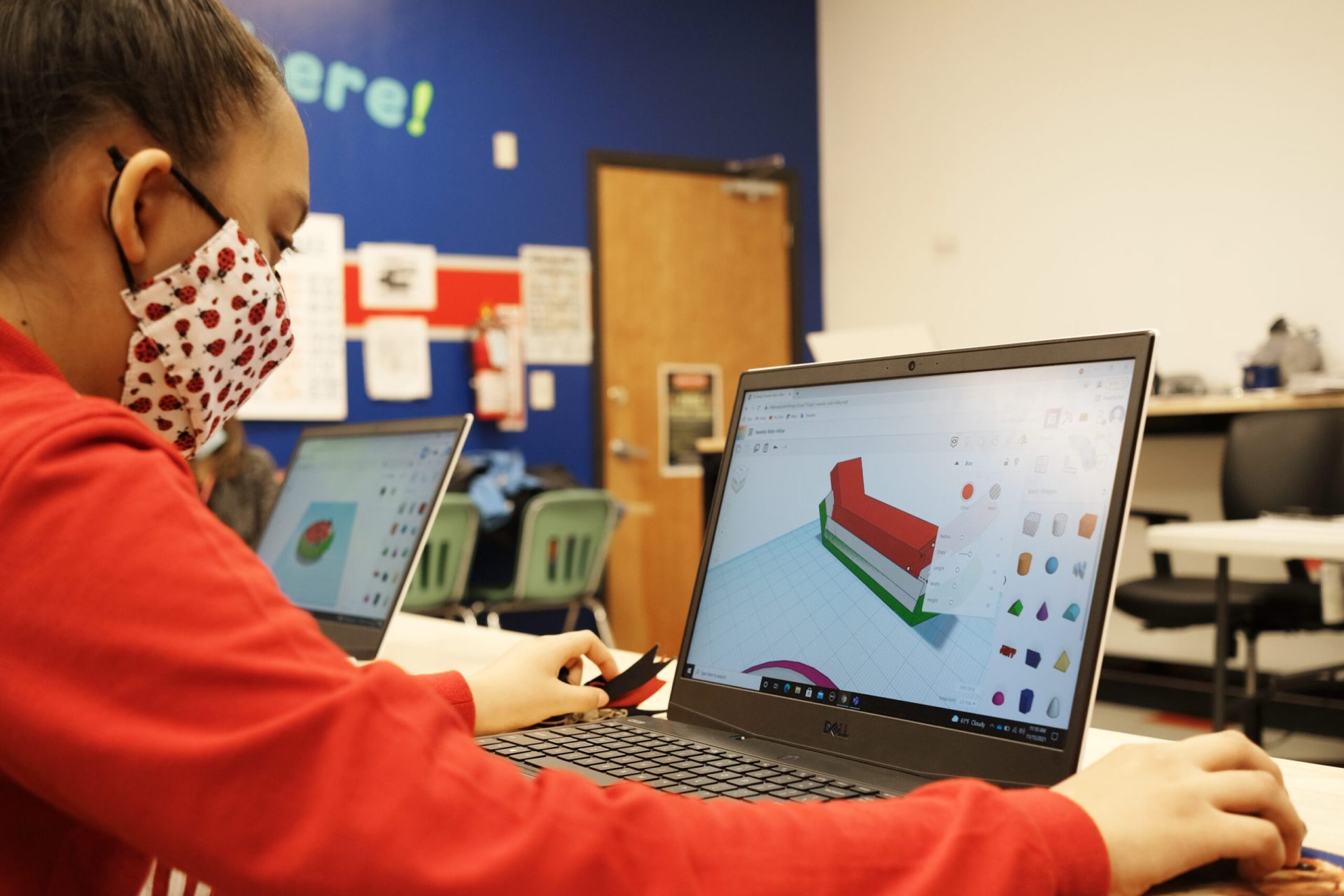
Students at Harmony Science Academy are learning how to 3D print objects they create in a Maker Space classroom made possible by Texas Education Agency grants and $46,000 in shared funding from the Elon Musk Foundation.
As the name suggests, the room provides a creative space where students learn how to make things using laptop computers, an app called Tinker CAD, and 3D printers where they can see their creations come to life.
Through Education Innovation Research grants from TEA and funding from the Musk Foundation, Harmony was able to “build a space 100% focused on STEM learning,” Principal Joel Alaffa said.
While Harmony has always focused on the STEM fields of science, technology, engineering and math, Alaffa said the Maker Space room allows HSA to build a curriculum around STEM concepts and 3D printing.

“The biggest thing is exposing them to STEM learning at an early age,” he said. “STEM is imbedded through project-based learning, so with our Maker Space it’s coming to life.”
On Nov. 15, fifth-grader Suzuri Paredes was using the Tinker CAD program to create an object that later could be made on a 3D printer. The Maker Space room has 30 laptop computers loaded with the Tinker CAD software and 30 3D printers that students use to print out their creations.
A siderail in the CAD, or computer assisted drawing, program includes a number of everyday objects that students can drag out into the work area and modify on an X-Y-Z plane. Then they can save their work to a USB card, plug it into a 3D printer and print out their work.
“This app gives me the power to design stuff and the other app gives me the power to print. It’s fun to make stuff,” Suzuri said.

Seated in front of a 3D printer, sixth-graders Azul Martinez and Ociel Garza worked on a blue nametag. They watched the machine “to make sure it prints with no mistakes,” Azul said.
The printer threaded a plastic filament that looks like the string used by a lawn string trimmer into its mechanical center and slowly the ordered object comes out onto a drying plate and cures.
“You can create anything on Tinker CAD,” Azul said, describing the 3D printing process as similar to “how a pen uses its ink. It’s a nice machine. It helps all of us,” she said.
Ricardo Rivera, also a fifth grader, described the process as being “fun for kids to learn to be creative and to use the 3D printers.”
He said he and his parents decided Harmony Science Academy would be a good place for him to learn the kinds of things he ended up learning.

Meanwhile, Manlio Muniz, the pre-k to eighth-grade STEM teacher in charge of the room, answered questions from students one at a time as the hands-on project-based learning continued.
Alaffa said Harmony Public Schools Brownsville received a $46,000 grant from the Musk Foundation split between Harmony Science Academy and Harmony School of Innovation, Harmony’s secondary campus on Dana Avenue.
He said the Maker Space room helps build a foundation for engineering concepts taught at HSI.



